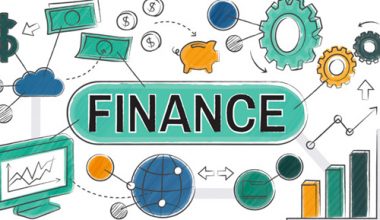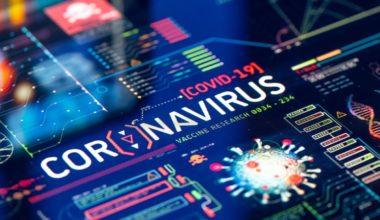
In recent days several businesses in financial services, logistics, healthcare, energy, and other sectors are bringing this technology into their framework for their company’s growth and sprinting to start implementing the blockchain technology.
Behind Bitcoin, which promises to improve efficiency in multiple processes, plus to take advantage of this opportunity many Blockchain Development Companies have started providing Blockchain Development services, which has created new business opportunities for Top Blockchain Companies.
But many are Blockchain companies doing so simply because of fear of missing out, without a clear understanding of how it can be useful and when it should be applied.
Blockchain technology has leaped into the future of companies with the launch of bitcoin in 2009. The concept was not as popular as it is today at the time of the release of cryptocurrency. Investors, however, started investing heavily in bitcoins over time, thus raising their market value.
This became the start of the introduction of blockchain technology in companies and people began searching for viable business concepts for blockchain. Possible benefits include lower costs, removal of duplication of data, increased speed of transaction, and increased resilience.
For now, you might wonder how to use blockchain for your own company and how to take advantage of it. Those problems are always related to new technologies, so do not worry, you are not alone.
Blockchain technology makes perfect sense for companies working to incorporate blockchain in a wide range of industries. If you’re still curious about making blockchain appropriate for your business needs, here’s a great guide that can help you make an informed choice.
What This Blockchain Development Is All About
What is Blockchain Development
Blockchain App Development Technology is as simple as its concept-the technology used to transmit data securely from one source to the next. In this case, data encryption is not carried out by a central authority but is distributed among a process chain. The information transcribed by blockchain is clear, making it visible to all. It is important to have extensive knowledge of how this technology works and how it will affect the company’s growth before incorporating blockchain technology into the process.
Technically, in accounting, the business will have a ledger delivery feature. Blockchain allows workers for business purposes by transferring money as networks of exchange. The commercial would not require the verification of such transactions by a third party.
Points to Remember When Implementing Blockchain
Here are the fast things to consider during the blockchain deployment process and tests.
-
Make it Work
You have to check it thoroughly if you want to know whether the system actually works. Testing it in a controlled setting is necessary first. You then have to check it in the real work as well. You might end up finding a particular parameter you have not considered before. Any such variations will affect the results of your implementation of blockchain.
-
Failure is Always an Opportunity
In the beginning, any part of your blockchain implementation protocol will not function to its peak. Make a list of all the problems and shortcomings, and try to fix them. You’ll find a lot of ways to do that. You can, however, try to keep the blockchain basic.
Trial and error will be your best friend at such times. Make sure you’re doing enough research and don’t let any go to waste. As part of your learning curve, handle every court. Make sure it helps you to flourish rather than withdraw.
-
Stay Focused
When making improvements and editing your protocol, you must keep your initial target in mind. You can easily be confused in the various aspects. This can hurt the strategy as a whole. Seek to see that you and your company are keeping up with what they told their clients and what they need. It should be your goal to make the process more successful, not to completely change it in the center.
To affect, this can lead to a diversion that is almost fatal. I used the word “fatal” because it could lead to the end of your blockchain effort. This will result not only in gross deceit but also a significant financial loss.
-
Prepare for the Future
Once you are able to create a working protocol for the implementation of blockchain, you will plan for what will happen next. Try to see if changes are needed for some apps. You also need to test whether the blockchain can be scaled to suit future growth needs.
Why Businesses are Eager to Implement Blockchain Technology?
Blockchain technology is fantasized by many businesses as it stores a collection of immutable data and transfers it securely, according to Android App Development Service Providers. A collection of computer regulations does not require a single authority to keep it secure from hackers. The software transferred data blocks were safe and secure with the aid of the technology’s cryptographic principles.
A company wants to use blockchain technology for various reasons. The theories of cryptography and the distributed blockchain network provide enormous benefits to businesses. Because the software is static, hackers cannot manipulate the information and the transparent nature helps businesses monitor the data.
If your business interest can be improved by giving your customers more visibility, if your business can benefit from a tamper-proof record-keeping process, or if your business can benefit from a tokenized business model, blockchain is a good fit for your company. Implementing blockchain in business will make the company more transparent, credible, and accountable.
Yet, surprisingly, most of blockchain technology’s business applications fall into two general categories:
-
Digital Asset Transfer
Digital assets are in more technical terms content that has been encoded into binary code and includes the right to use that property. Such properties are granted virtual ownership and include anything on flash drives and SD cards that is stored online or offline. For the transfer of such digital assets, there are various online portals, but the drawback is the lack of security.
That’s where blockchain shines with the peer-to-peer network that checks itself continuously. Every trading platform maintains its own server in the conventional electronic trading model where information from all sellers is processed. While third parties protect all data, there is a central authority with access to all information.
Blockchain-based trading, on the other hand, is based on decentralization, which means buyers and sellers will have both a simple trading platform and a safe one where their identity remains anonymous. This removes intermediaries and helps an organization connect directly to its customers.
-
Transparency (Audit Logging)
Blockchain in companies helps by tracking their assets and transactions securely to ensure transparency. All the records remain intact and confidential for each client, but all these transactions are registered in a permanent ledger, meaning all the data can be accessed at any time with the right decryption code or a public key.
It guarantees visibility across the network for all clients, making all transactions easy to access and available, and making organizational audits very easy. Every transaction can be tracked from its source to the final destination in a blockchain network.
Such a level of transparency would add an extra layer of protection to the safety of their products for a supply chain process or asset management set-up. It also removes the need for a review of mistakes, professional auditing, and other accounting practices.
Now you know why the blockchain I company should be adopted. What you need to understand now is the basics of each blockchain network and the types of blockchain networks that will best suit your company.
How Many Types of Types of Blockchain Our There
-
Private Blockchains
A personal blockchain, on the other hand, is a single-entity invitation-only network. Network entrants should be allowed to read, write, or audit the blockchain. Multiple levels of access may exist, and data may be encrypted to ensure the confidentiality of the business. Private blockchains allow organizations without making the data public to use distributed ledger technology. However, this obviously means they lack the main blockchain feature: decentralization.
Several critics argue that private blockchains are not blockchains, but hierarchical servers that use distributed ledger software. Compared to public blockchains, private blockchains are comparatively quicker, more stable, and more cost-effective because they take a lot of time and energy to verify transactions.
-
Public Blockchains
As the name suggests, a public blockchain is a free, distributed, and decentralized network. Anyone in a public network can access the protocol, read, write, or participate. Transactions are registered as blocks in a shared ledger and linked together to form a chain. Every new block is time-stamped and validated by all network-connected computers, known as nodes before they are inserted into the blockchain.
All nodes will be equal and all transactions will be public. This ensures that a public blockchain cannot be updated, i.e. information cannot be altered once it has been checked. Ethereum is the best-known public blockchain: an open-source, smart blockchain contract.
-
Federated or Consortium Blockchains
Federated blockchain aims to remove the single function of independence where all jurisdictions fall with only one body as in private blockchains. Essentially, it is responsible for more than one person. A team of firms or leaders come together to make decisions for the good of the network. These organizations are also referred to as federations or consortia, hence the term federated or blockchain consortium. These blockchains are capable of running a complete node, beginning mining, and adding chain transactions. The ledger in a Ledger explorer can also be updated or audited.
Blockchain can be introduced in business depending on the degree of information functionality and transparency and can be adapted to the exact business requirements. Once the blockchain sort is chosen, the next big step is to pick the correct platform for blockchain.
Some of the Leading Blockchain Platforms
Whether it is private, shared, or federated, it is not easy to apply blockchain to a corporation. Any business ‘ priorities will concentrate on cost reduction, improved customer retention, and cost savings for auditing. A business needs to assess the development process and functionality of each blockchain platform to determine its efficacy in increasing its profitability.
Adopting a blockchain system in every company will increase the efficiency of work and cost savings. Therefore, which channel to use is the next big factor that a company should consider.
BigChainDB
BigChainDB is an open-source, distributed ledger framework designed to store large amounts of data, allowing developers to deploy Blockchain applications and concept proofs. The server provides distributed access, immutability, low latency, efficient search features, and transaction processing at high speed. The program does not have its own currency, but it allows any resources, tokens, and cryptocurrencies to be distributed and exchanged.
BigChainDB supports personalized digital assets and sets transaction-level access permissions. BigChainDB is based on a Federation Consensus Model, a node federation with permission to vote. BigChainDB has numerous use cases to benefit both public and private networks, including in areas of intellectual property, finance, human resources, and land registry.

Key features of BigchainDB
- Highly tailored to requirements such as intellectual property protection, identity management, land registry documentation, etc.
- Native multi-asset support: with no native currency on BigchainDB, any asset, token, or currency can be provided.
- Set transaction-level permissions to ensure a clear division of duties and implement selective access.
- Options for writing and running any MongoDB query to search all stored transactions, resources, metadata, and blocks content.
- The BigchainDB business is managed and controlled
- It’s a network of a shared system.
Corda
Corda is a Blockchain open-source framework designed to build distributed ledger systems that are licensed. The R3 consortium created the venture, merging the largest banks. It allows users to handle legal agreements between different parties. R3 Corda, like any other distributed ledger, provides data storage protection and information recording immutability.
It is noteworthy that the creation of interoperable blockchain networks that transact with strict confidentiality is only possible with Corda. It’s possibly the only distributed ledger system that has pluggable consensus at the moment.
Key features of R3 Corda:
- Runs on a distributed customized ledger that is tailored to the needs of the financial industry.
- Since it is a private blockchain, it requires permission to access the content of the network.
- The parties involved in a transaction may engage in any decision-making process.
- In the programming language of Kotlin, smart contracts are created.
Ethereum
Ethereum is a Blockchain open-source framework that offers programming tools to create and runs smart contracts. The framework will simplify the design of distributed apps (DApps) of the next generation as well as digital contractual agreements. Ethereum helps its users to model and issue digital tokens and cryptocurrencies that can be exchanged.
Key features of the Ethereum network:
- Popular with a broad generalized application usage and mostly used for operations with P2P and B2C
- Most of the operations were carried out by programmers
- Since it is a decentralized blockchain, access to network content requires no specific permission.
- This depends on the decision-making proof of Stake (POS).
- Smart contracts are being designed using the programming language of Solidity.
- It is fuelled by its native cryptocurrency.
Hyperledger Fabric
Blockchain Hyperledger Fabric is one of The Linux Foundation’s most successful hyper ledger projects, launched in 2016. The fabric is written in Go and Dockers-containers are used for the smart contract implementation. The framework provides the basis for the design of Blockchain-based solutions with a modular architecture and allows the use of one or more networks. It allows for high mobility, scalability, and performance levels.
It also provides mechanisms for the exchange of sensitive payment information and support policies.
Key features of Hyperledger fabric:
- B2B operations choice platform and are primarily used by businesses.
- The Linux Foundation is responsible for overseeing and controlling operations.
- Since it is a private blockchain, data access permission is restricted.
- The process of consensus does not require the involvement of all nodes in a network
- Golang Programming Language is used to develop smart contracts.
EOS
EOS is a blockchain framework used to build distributed (dApps) applications. This promotes the development of dApps by offering an operating system-like collection of functions and services that can be used by dApps. The concept behind the creation of EOS is to carry out the best features and promises of the different smart contract technologies. To put it simply, the EOS project aims to provide the average consumer with an easy-to-use, massively scalable dApp system.
The EOS plans to build a blockchain dApp system that can seamlessly and securely scale in a second to thousands of transactions, all while providing an open interface for developers, consumers, and entrepreneurs of applications. By providing services such as user authentication, database hosting, and cloud storage, they seek to provide an operating system that is ideal for distributed applications.
Key features of EOS:
- Scalable dApps large-scale system.
- Ability to execute millions of transactions per second
- Block tracks events and functions.
- The model of consensus requires Delegated Stake Evidence (DPoS).
- Cloud assembly is used to create smart contracts.
What’s Next?
Blockchain technology is well-known among businesses because of faster transactions, security, and a number of supply chains. Integrating Blockchain in Business will provide clarity to their customers and boost customer loyalty. With the use of cryptographic concepts, the highly encrypted security process helps to keep the data safe from hackers.
Blockchain is a real necessity for industry and is expected to become a massive market. This technology is recognized for its advantages to a Blockchain app Development Company like Fusion Informatics.
I am sure now you have a clear idea of how blockchain can be applied. This article will help you achieve your goals if you want to introduce your own blockchain or simply want to integrate blockchain technology into your existing business.





